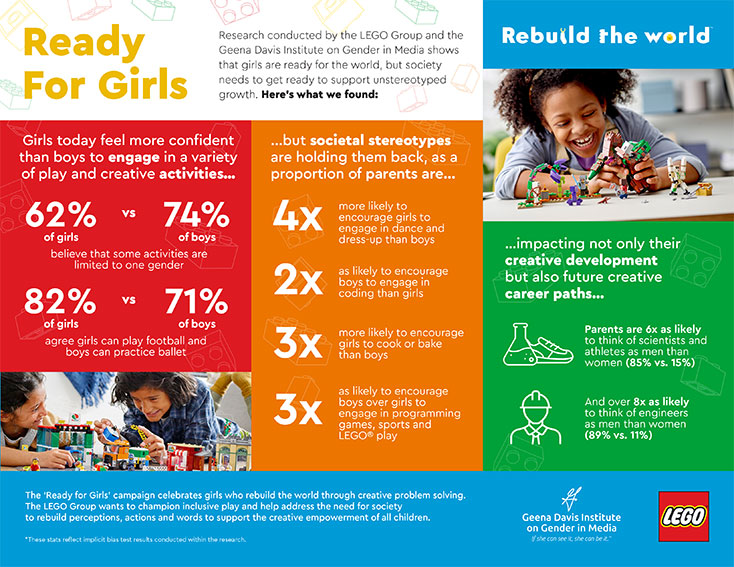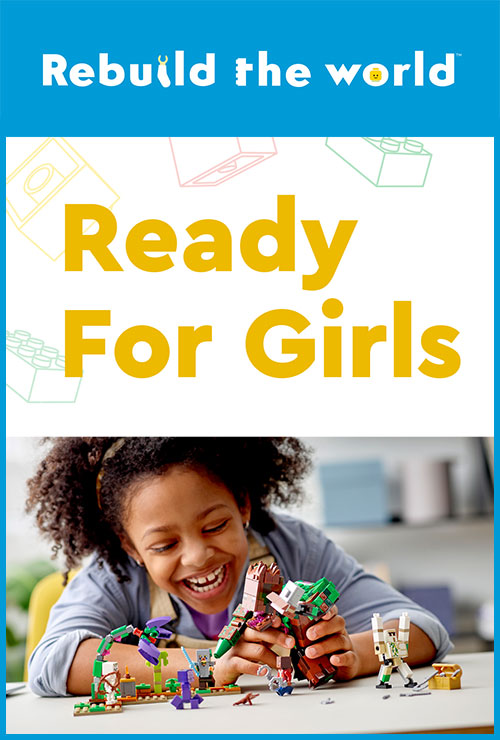

Dive into the “Ready for Girls Creativity Study,” a collaboration between the LEGO Group and the Geena Davis Institute. This groundbreaking research seeks to unravel the complexities of how “creativity” is influenced by gender perceptions. By examining the attitudes of parents and children towards creativity, the study aims to determine if societal norms dictate creative expression differently for boys and girls. Our global survey spans seven diverse markets including the US, UK, Czech Republic, China, Japan, Russia, and Poland. Moreover, we analyze UK media content to understand the messages about creativity shaping public opinion.
Survey Analysis Highlights:
- Parents feel more constrained in promoting certain creative activities to their sons than to their daughters.
- Boys show a preference for creative tasks aligning with traditional gender roles.
- Surveys reveal a tendency for parents to steer daughters towards artistic and dramatic pursuits, a trend consistent across international markets.
- Sons are encouraged by parents to pursue STEM-related, physical, and exploratory creative activities, a universal trend.
- Despite the child’s gender, parents and children often visualize men in creative professions, highlighting a gender bias.
- The call for gender-neutral marketing in creative products echoes loud in parents’ feedback.
Content Analysis Insights:
- Parenting Blogs feature female creatives more prominently (61%) than male counterparts (35%), yet men take the lead in public conversations (53% vs. 47%).
- Visual dominance in media for female creatives contrasts with more frequent headline mentions for male creatives in both Parenting Blogs and Public Discourse.
- Though not overtly gendered, media content subtly reinforces stereotypes, with women described in feminine terms, and men in masculine terms, more frequently in both media categories.
- Creative professions covered vary, with women more often depicted in traditionally feminine roles within creative industries.

